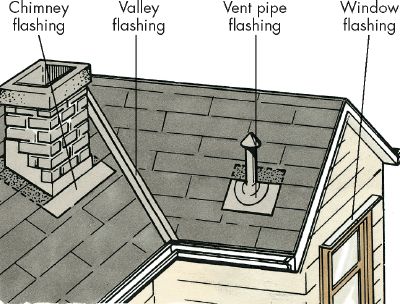Flashing is an important component to roofing systems. If you’re planning on installing a new roof, or maybe you’re replacing your existing roof, it’s important to understand how this crucial component plays a big part in your roof’s ability to protect you and prevent leaks from happening.
What is Flashing & Why is it Important?
To simply define it, flashing is a flat, thin piece of metal used to help waterproof the perimeter and protrusions of roofing systems. Flashing is used to direct water away from the seams and joints and prevents it from entering the openings and cracks in a roof. It’s typically installed over top of the underlayment, but underneath the shingles of shingled roofs. On metal roofs, it’s typically installed on the top of the panels. The most important role flashing plays in a roofing system is to keep your home free of water and moisture.

Where is Flashing Needed on a Roof?
Properly installed flashing is essential to its performance. Poor installation could lead to roof deterioration, water penetration, and more long-term issues. It’s needed in a few areas on your roof that are especially vulnerable to leaks, including the following:
- Skylights – If your roof has skylights, they are typically built in with raised wood curbs to make room for flashing. Some skylights might already come with flashing built in. It’s important to know the difference and talk to your contractor before choosing the best skylight for your roof.
- Chimneys — Flashing needs to be installed around the base of any chimneys on your roof in several different parts. It's important to seal up the area around your chimney to keep your interior dry.
- Vents — Whether you have hood or pipe vents, flashing must be installed to seal out any possibility of water trickling into your roofing system.
- Valleys — On sloped roofs, flashing needs to be installed where two valleys meet. This is where the two sloping roof planes meet and create an angle, which are notorious spots for water to penetrate unless flashing is properly installed.
This, of course, is not an exhaustive list of all the areas that may need flashing installed. Your qualified contractor should be able to go over a comprehensive list of where all flashing will be needed and installed if you have questions about it.
If you have questions about flashing and your next roofing project, contact a Bridger Steel Product Specialist today. Our team of experts can give you even more information about this crucial component to roofing systems, as well as make expert product recommendations. Contact our team today to get started or fill out our Get a Quote for to get the process started!
